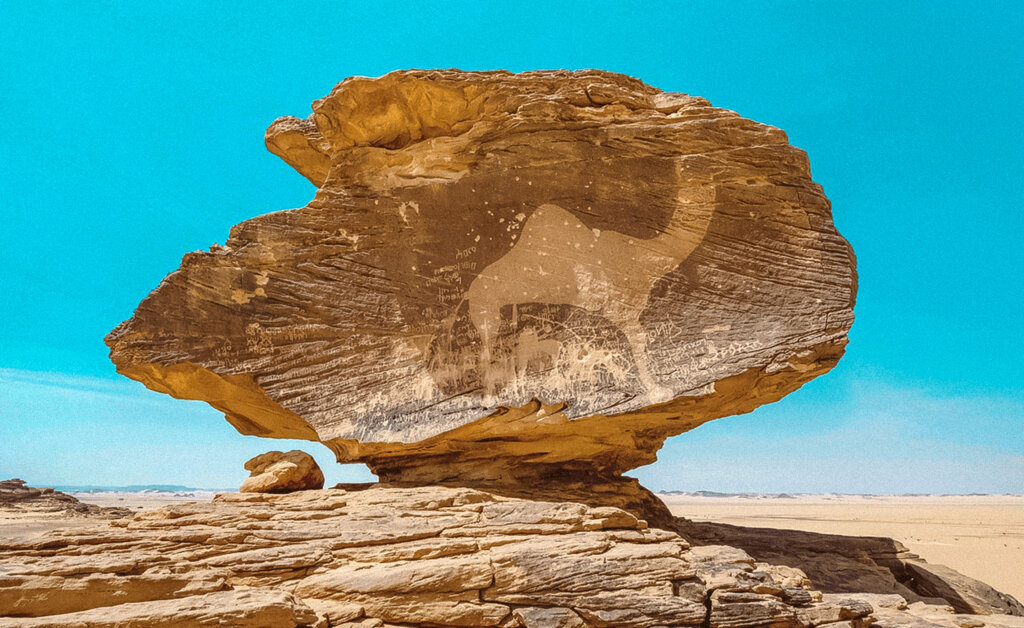In Abar Hama there are some 300 different locations containing stone engravings and drawings, including prehistoric depictions of animals. You’ll find engravings of human figures and giraffes which date from around 5500 BC. The area is a little difficult to reach, but the journey is worth it. Once there you’ll see evidence of Neolithic settlements in the Abar Hama area at Wadi Tathlith, and Jebel Sawdh. The drawings were made the climate was milder and more humid, allowinAt the time g basic cultivation and the domestication of sheep and cattle to take place. Petroglyphs and inscriptions are found in particularly high concentrations in the Abar Hama, Yadmah and Jebel al-Qarrah areas and can be found adjacent to wells, springs and watercourses which once supported permanent, nomadic and transit populations. At that time the camel was being domesticated and the people of Arabia were able to evolve a nomadic and tribal culture. The Abisha fresco around Jebel al Qarrah feature fat-tailed sheep which are still bred in the area. Other illustrations include cattle, ibex, lion, camels, ostrich, a baboon, hunting people, people fighting and people performing ritual dances. In some cases, human figures are depicted with wusum – motifs that signify clan affiliations.
